Samsons in Louisbourg
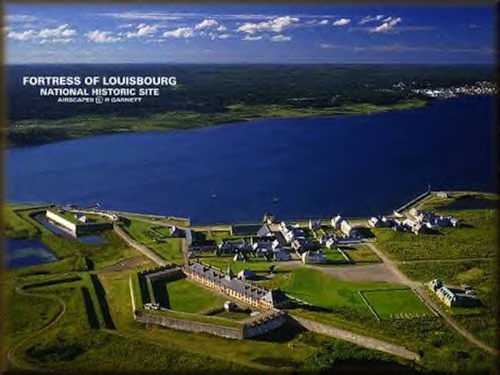
A few years after the signing of the Treaty of Utrecht in 1713, many of the French Acadians living in what had become British territory, were encouraged by France to resettle in the northern part of Nova Scotia, Cape Breton, known then as Ile Royale. Around 1720, Gabriel Samson refused to take the Oath of Allegiance to the British Crown and with a few other Acadian families, relocated to the small village of Port Toulouse. While on Ile Royale, his occupation as a coastal trader and ship builder brought Gabriel in close contact with residents of the Fortress of Louisbourg.
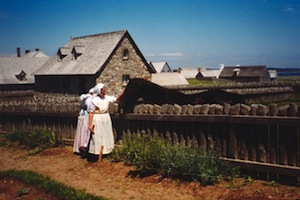 Several of Gabriel's daughters married men from Louisbourg, and settled in the fortified village. Anne-Madeleine, his eldest daughter, married about 1722 at Port Toulouse, Jean-Marie Richard, and the couple ran a tavern in Louisbourg. Gabriel's second daughter, Marie-Madeleine, also married a Louisbourg man about 1730, named Louis Le Cuyer. Following the death of Gabriel's wife Jeanne, his third daughter, Marguerite-Louise went to live with her eldest sister and brother-in-law to help them run the Richard family tavern.
Several of Gabriel's daughters married men from Louisbourg, and settled in the fortified village. Anne-Madeleine, his eldest daughter, married about 1722 at Port Toulouse, Jean-Marie Richard, and the couple ran a tavern in Louisbourg. Gabriel's second daughter, Marie-Madeleine, also married a Louisbourg man about 1730, named Louis Le Cuyer. Following the death of Gabriel's wife Jeanne, his third daughter, Marguerite-Louise went to live with her eldest sister and brother-in-law to help them run the Richard family tavern.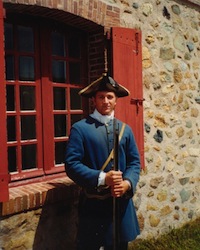 It was at Louisbourg that Louise met Jean-Francois Lelarge, a distinguished young naval captain who lived about a block away on the Rue de l'Etang. Early in 1735, the young couple called a few friends to the Richard's inn, where they solemnly exchanged written promises of marriage. The signing was witnessed only by their close friends, but both felt bound by it.
It was at Louisbourg that Louise met Jean-Francois Lelarge, a distinguished young naval captain who lived about a block away on the Rue de l'Etang. Early in 1735, the young couple called a few friends to the Richard's inn, where they solemnly exchanged written promises of marriage. The signing was witnessed only by their close friends, but both felt bound by it.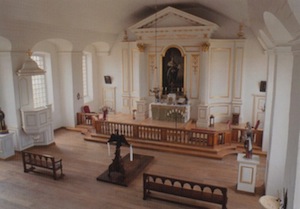 At that time the church held that a priest could not refuse to bless a marriage of any couple who met the religious requirements. However, society demanded the church tailor its stand to practical requirements. The church yielded to civil pressure and parental permission became a canonical requirement. After a few days in the guardhouse, Lelarge sent a petition to the judges to not waste his time if this matter was not a criminal one. An investigation was held. Six months later Jean-Francois Lelarge and Marguerite-Louise Samson were married. Jean-Aimable Lelarge was born 9 months and 9 days afterwards.
At that time the church held that a priest could not refuse to bless a marriage of any couple who met the religious requirements. However, society demanded the church tailor its stand to practical requirements. The church yielded to civil pressure and parental permission became a canonical requirement. After a few days in the guardhouse, Lelarge sent a petition to the judges to not waste his time if this matter was not a criminal one. An investigation was held. Six months later Jean-Francois Lelarge and Marguerite-Louise Samson were married. Jean-Aimable Lelarge was born 9 months and 9 days afterwards.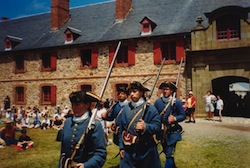 During the 1745 siege of Louisbourg, Louise was in the fortress awaiting the imminent birth of her fourth child. When Louisbourg capitulated in 1745, the Lelarges went into exile with the rest of their neighbours. At the war’s end, Louisbourg was given back to France but the Lelarges did not go back to Louisbourg. From 1744 until the end of his life, Jean Lelarge put his service to the crown as a privateer and naval officer. They settled in the naval town of Rochefort with his mother, his siblings and his orphaned neice. Jean died in 1761 at Rochefort, France after a distinguished naval career.
During the 1745 siege of Louisbourg, Louise was in the fortress awaiting the imminent birth of her fourth child. When Louisbourg capitulated in 1745, the Lelarges went into exile with the rest of their neighbours. At the war’s end, Louisbourg was given back to France but the Lelarges did not go back to Louisbourg. From 1744 until the end of his life, Jean Lelarge put his service to the crown as a privateer and naval officer. They settled in the naval town of Rochefort with his mother, his siblings and his orphaned neice. Jean died in 1761 at Rochefort, France after a distinguished naval career. 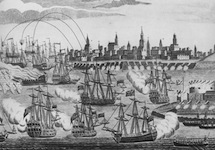 |
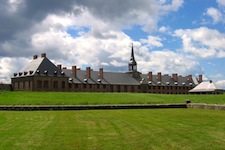 |
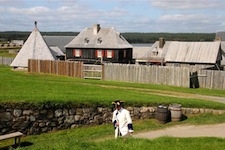 |
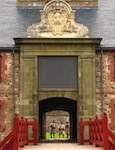 |
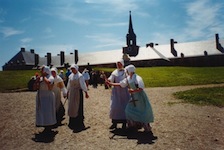 |
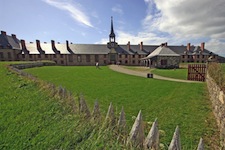 |
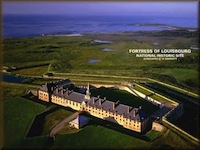 |
 |

